FROM HUMBLE BEGINNINGS… NAPLES BOTANICAL GARDEN
by Dave Trecker
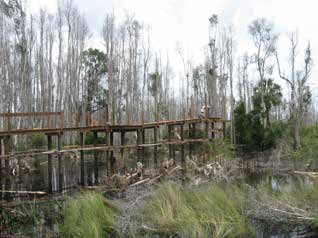
Before Clearing the Melaleuca
In the beginning there was no land, no plants, no money.
But there was a vision.
A group of local plant enthusiasts came up with the idea of creating a garden, a big one full of tropical plants. Not a radical idea, but certainly a new one for Naples: A showplace of plants for the public.
It all started in 1993, when Dr. Everett Alsbrook and Dr. Robert Reed questioned why a collection of local palms should be shipped to Fairchild Gardens in Miami. Why not keep them here? A clutch of plant lovers agreed, and an organization was formed. “This was a real dirt-under-the-fingernails bunch, people who just loved gardening,” recalls Catherine Ware, a long-time board member.
A year later, armed with nothing but enthusiasm, the group incorporated Naples Botanical Garden. There was a name, but little else. Connie Alsbrook remembers the early days. “That was our wandering-in-the-wilderness time,” she says.
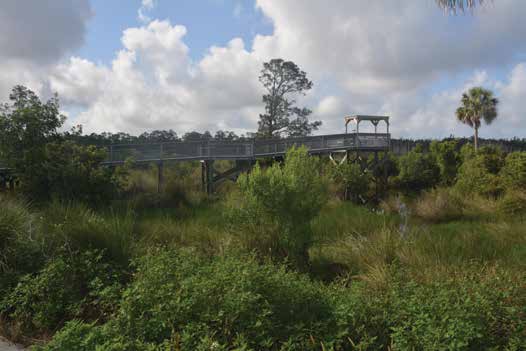
After Clearing the Melaleuca
A breakthrough came in 1998 when Linda White, later to become board chair, cold-called Harvey Kapnick, Jr., an acquaintance in the Chicago area, to explore his interest in purchasing land for the Garden. Kapnick turned down the first site, but kept the door open should a better parcel come along.
It did. In 1999, Collier Enterprises offered the current tract in the Bayshore section of Naples, and in 2000 Kapnick gave the vision a home. He donated $5 million to buy the land –170 acres,90 for permanent conservation.
The land was hardly a showplace. Part strip mall, part garbage dump, the tract was infested with melaleuca, a rampant invasive from Australia. “There were homeless people living there that had to be relocated,” Alsbrook recalls. The site was a mess. More money and a great deal of effort would be needed to convert the swampy snarl into a formal garden.
In 2002, a small section was reclaimed, and a Mosaic Garden was built as a public demo. It turned out well, and a plan to build Naples Botanical Garden began to take shape.
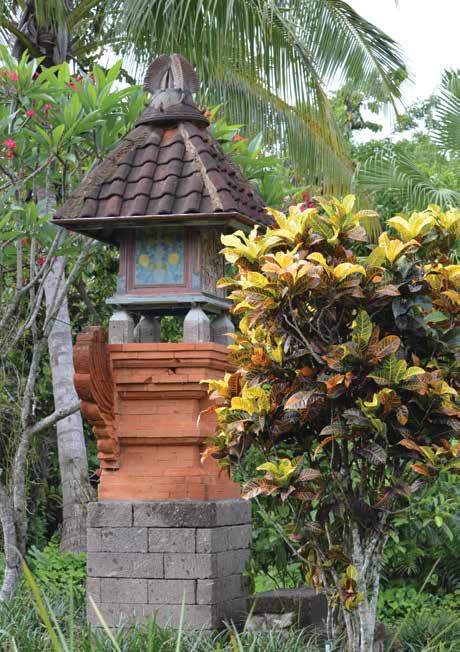
Asian Garden
Chad Washburn, Deputy Director, recalls the early days. He says it took three years to clear the melaleuca and create an open marsh. Volunteers came to help. Washburn remembers a “community day” when 110 people showed up to rescue native grasses, ferns and bromeliads and tag royal poincianas and ficus, many of which were later incorporated into the Garden.
To move things along, the staff had to improvise. Washburn tells of uprooting, moving and replanting a huge strangler fig, now a centerpiece of the Children’s Garden. “It was quite a sight, seeing it wobble through the underbrush towering over everything else.” Washburn says, “We learned how to do it. Not every garden has the know-how to move big tropical trees.”
Early visitors were not bashful about speaking their minds. “We came to understand what people liked,” Washburn said.“ For example, a native screw pine stopped traffic. People were just fascinated by it.” That helped influence the makeup of Irma’s Garden, now filled with off-beat plants that get peoples’ attention.
A master plan took shape in 2005, when Executive Director Brian Holley assembled a “dream team” of tropical landscape architects, each to design a part of the new garden: Raymond Jungles, Bob Truskowski, Ted Flato, Made Wijaya, Ellin Goetz. Alsbrook says, “We tried to get the best people, and we did.” Things fell into place and the sections were rolled out in phases:
- The Brazilian Garden, Caribbean Garden and Children’s Gardenopened in 2009.
- The Water Garden and Asian Garden debuted in 2010.
- The Visitor Center, Kapnick Hall, Fogg Café and Berger Gift Shop opened in 2014, along with the interspersed Kathryn’s Garden, Irma’s Garden and the LaGrippe Orchid Garden. (The original visitor center was a double-wide trailer.)
- A rejuvenated Florida Garden opened in 2016.
Little was spared to ensure authenticity. In the Asian Garden, the Thai Pavillion was built from over 10,000 tongue-and-groove pieces shipped from Bali and reassembled. Native statuary came from countries throughout Southeast Asia.
And the Naples community continued to help. The late Elsie Page collected fruit trees and gave many of them to the Garden. The Club Pelican Bay donated its iconic triple-date palm. Plants from St. George & the Dragon were moved to the Garden after the restaurant closed. (A “No Parking” sign was included in the gift.) A fig tree from FedEx now resides in the Asian Garden.
Washburn says, “This is not your typical botanical garden. People are invested in it.” Alsbrook adds, “It’s a hands-on love affair. So many people have helped.”
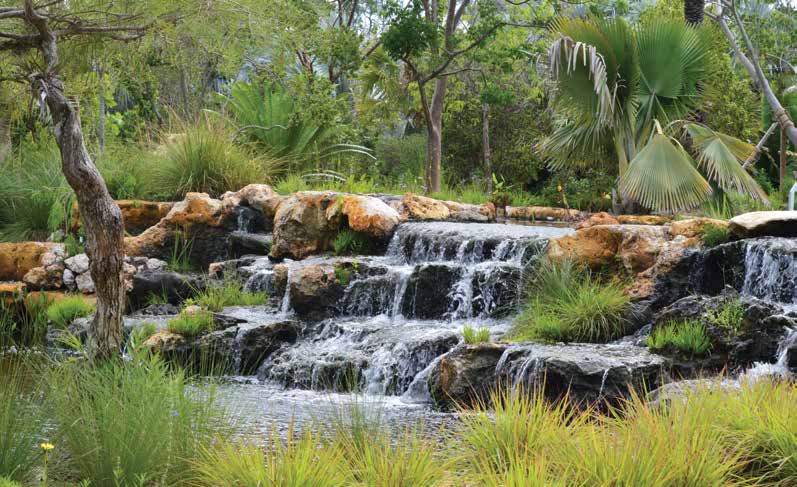
Florida Garden
It’s certainly on everyone’s “to see” list, particularly when grandchildren come to town. Over 220,000 visit the Garden each year– most to soak up the plantscape, but some to sample the concerts, plays and special exhibits that take place there.
It’s been a remarkable journey. Few would have guessed the uninhabitable wasteland of 2000 would have turned into the world class showplace we enjoy today.

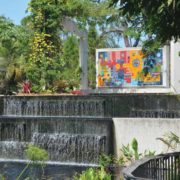


Leave a Reply
Want to join the discussion?Feel free to contribute!